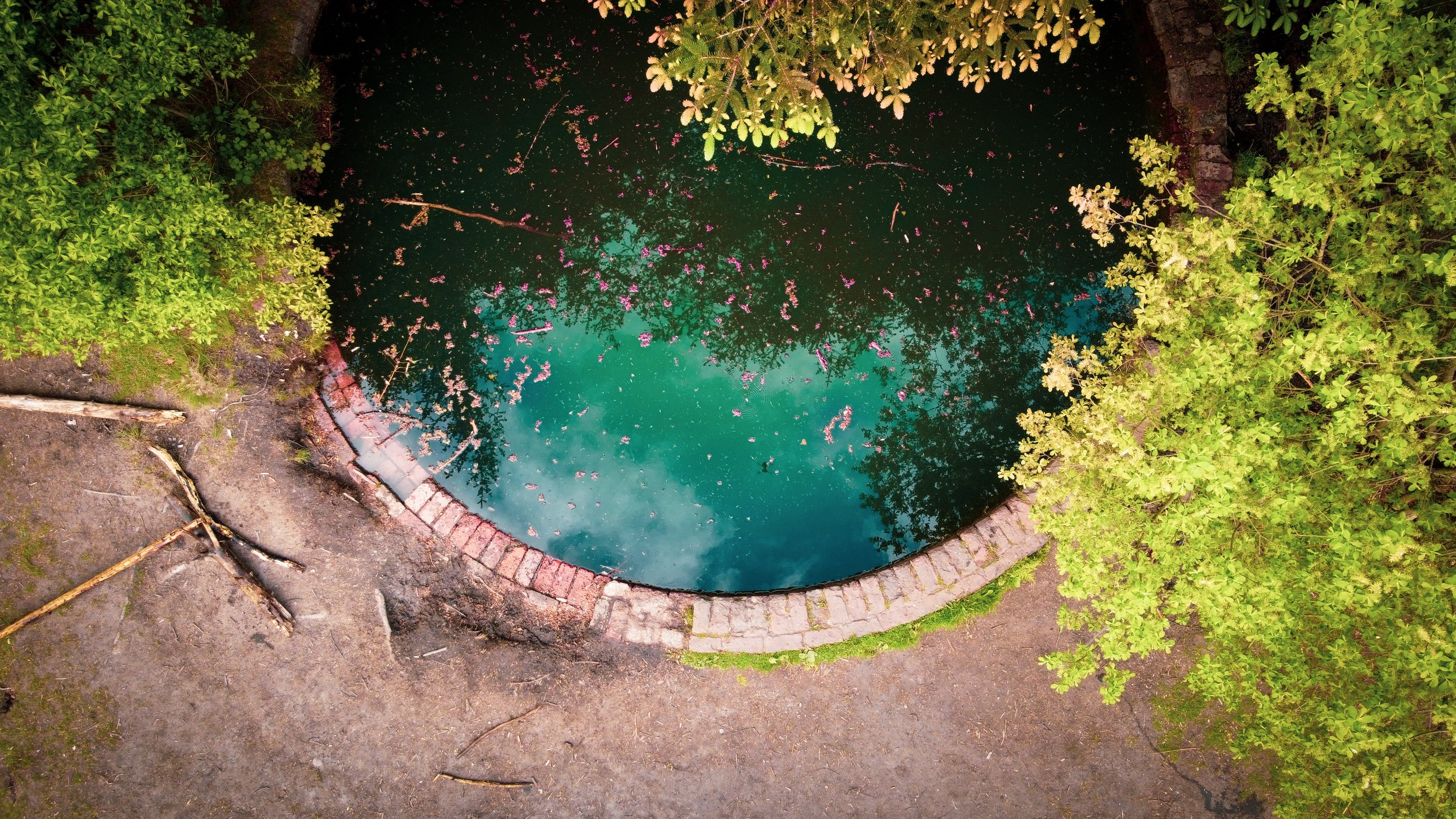WHAT ARE RETENTION PONDS AND ITS PURPOSE?
RETENTION PONDS
Retention ponds are artificial water bodies that are designed to hold water and prevent flooding by temporarily storing excess water during periods of heavy rainfall. These ponds are often used in urban areas to manage stormwater runoff and prevent flooding of streets, homes, and businesses.
Retention ponds are typically built in low-lying areas where the ground is relatively flat and can hold water. They are often constructed using earthen berms or embankments, which are built up to create a shallow basin. The water is then allowed to fill the basin, and any excess water is temporarily stored until it can be safely released through pre-installed pipe systems.Retention ponds serve several important functions. In addition to preventing flooding, they also help to recharge groundwater supplies and improve water quality by filtering out pollutants and sediment from stormwater runoff. This can help to protect local streams, rivers, and other water bodies from pollution.Retention ponds are also important for wildlife habitat. Many species of birds and other animals depend on these water bodies for food and shelter, and retention ponds can provide important breeding and nesting areas. In addition, retention ponds can help to mitigate the effects of drought by storing water during wet periods and releasing it during dry periods.While retention ponds are generally considered a useful tool for managing stormwater, they do have some potential drawbacks. For example, they can become stagnant and foul-smelling if not properly maintained, and they can also attract mosquitoes and other pests. In addition, retention ponds can be aesthetically unpleasing, especially if they are not properly landscaped.Retention ponds are an important tool for managing stormwater and preventing flooding in urban areas. They provide many benefits, including protecting water quality, providing habitat for wildlife, and mitigating the effects of drought. However, it is important to properly maintain and manage retention ponds to ensure that they continue to provide these benefits.What is the purpose of a retention pond?
A retention pond is a type of stormwater management structure designed to hold and temporarily store stormwater runoff. The purpose of a retention pond is to manage the quantity and quality of stormwater runoff in order to prevent downstream flooding and protect water quality in nearby streams, rivers, and other water bodies.
Retention ponds are typically used in urban and suburban areas where the natural landscape has been altered by development. When rain falls on pavement, rooftops, and other impervious surfaces, it cannot soak into the ground, and instead flows over the surface as runoff. This runoff can carry pollutants such as oil, grease, fertilizers, and other contaminants into nearby waterways.
Retention ponds are designed to capture this stormwater runoff and hold it until it can be released at a controlled rate. This helps to reduce the amount of runoff entering nearby waterways, and allows pollutants to settle out of the water. The pond also provides a buffer to help filter out pollutants before the water is released.
Retention ponds are often landscaped with vegetation and other features to improve their aesthetic appeal and provide habitat for wildlife. The ponds may also be used for recreational purposes, such as fishing or boating.
To summarize, the purpose of a retention pond is to help manage stormwater runoff in a way that protects water quality and reduces the risk of downstream flooding. By providing a place for stormwater to be temporarily stored and released, retention ponds help to improve the health of our rivers, streams, and other water bodies.
How is the water in a retention pond managed?
A retention pond is a man-made basin designed to hold stormwater runoff. The water in a retention pond is typically managed using a combination of methods to control its levels and prevent flooding.
One common method of water management in retention ponds is through the use of an inlet and outlet structure. The inlet structure is typically located at the lowest point in the pond and is used to control the inflow of stormwater into the pond. The outlet structure, on the other hand, is located at the opposite end of the pond and is used to control the outflow of water from the pond. The inlet and outlet structures are typically equipped with gates or valves that can be adjusted to regulate the flow of water into and out of the pond.
Another way that the water in a retention pond is managed is through the use of a network of pipes and channels that carry stormwater from surrounding areas into the pond. These pipes and channels are typically designed to carry excess stormwater away from roads, buildings, and other structures to prevent flooding. The water in the retention pond is then allowed to slowly drain back into the surrounding environment through the outlet structure.
The water in a retention pond may also be managed through the use of pumps. In cases where the water level in the pond rises too high, pumps can be used to move the excess water out of the pond and into a nearby drainage system. This helps to prevent flooding and keeps the water level in the retention pond at a safe level.
In addition to these methods, retention ponds are often designed with sloping sides and a deep center to encourage the settling of sediment and other debris. This helps to prevent the pond from becoming clogged and ensures that the water in the pond is clean and free-flowing.
What are the benefits of a retention pond?
A retention pond is a man-made pond or basin that is designed to hold water for a certain amount of time, typically for the purpose of retaining stormwater runoff or other water sources. The benefits of a retention pond are numerous and can include the following:
Flood Control
The primary function of a retention pond is to prevent flooding by capturing and temporarily storing excess stormwater runoff. This can help to prevent damage to property and infrastructure, and can also help to protect against soil erosion and other environmental impacts.
Water Quality
Retention ponds can also help to improve the quality of the water that is stored in them. As the water is held in the pond, sediment and other pollutants can settle to the bottom, leaving the water clearer and cleaner. This can help to improve the overall water quality in the surrounding area.
Habitat and Biodiversity
Retention ponds can also provide important habitat for a variety of plant and animal species. The pond itself can support aquatic life, while the surrounding area can provide habitat for birds, mammals, and other wildlife. This can help to increase biodiversity in the area and can also provide valuable recreational opportunities for people.
Recharge of Groundwater
Retention ponds can also help to recharge groundwater by allowing water to slowly percolate into the ground. This can help to maintain or improve the health of aquifers and other groundwater sources, and can also help to prevent the loss of water through evaporation.
Recreational Opportunities
Retention ponds can also provide recreational opportunities for people. Many people enjoy fishing, boating, birdwatching, and other activities in and around retention ponds. This can help to make these areas more attractive and can also provide valuable outdoor recreational opportunities for people in the surrounding community.
Are there any drawbacks to retention ponds?
Retention ponds are designed to manage stormwater and prevent flooding, but there are some potential drawbacks to consider. For example, retention ponds can be a breeding ground for mosquitos and other pests, which can be a nuisance to nearby residents. Additionally, retention ponds can become overgrown with weeds and other vegetation, which can clog the pond and reduce its effectiveness in managing stormwater.
Another potential drawback is that retention ponds can be a safety hazard, particularly for young children who may be tempted to play in or near the water. In some cases, retention ponds may not be deep enough to prevent people from drowning, and there have been instances of people falling into retention ponds and drowning.
Furthermore, retention ponds can be expensive to maintain. Regular maintenance is necessary to keep the pond clean and free of debris, and this can be a significant expense for property owners or municipalities. In addition, retention ponds can take up a significant amount of space, which can be a problem in areas with limited land available.
One final potential drawback of retention ponds is that they can be a source of pollution. When stormwater flows into a retention pond, it can pick up pollutants such as fertilizers, pesticides, and other chemicals. If the pond is not properly maintained, these pollutants can build up over time and potentially contaminate the surrounding area.
Overall, while retention ponds can be an effective way to manage stormwater and prevent flooding, there are some potential drawbacks to consider. It is important for property owners and municipalities to carefully weigh the pros and cons of retention ponds and ensure that they are properly maintained by professionals in order to minimize any negative impacts.
Featured Blogs
SIKES CONCRETE INC.
8030 FL-77, Southport, FL 32409
850-265-4564






